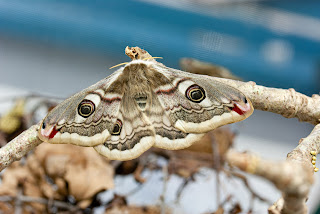Hello Moth-ers,
In a couple of days’ time with the start of another New Year I am
once again doing our January moth challenge and this year the challenge is open
to anyone who wishes to take part, whether you trap in Montgomeryshire or not.
For those of you who don’t know, the challenge is to record 10 macro species (and 5 micro species if you record micros), or of course, as many species as you can record during January. As many of you have found out in the past, this is definitely not an easy challenge, but it’s well worth having a go at as it generates many extra winter records when recording is often very sparse. It’s also a bit of fun, so go on, have a go, see how you get on, you might surprise yourselves!
There are only a few simple rules I would ask you to please follow:-
1) Adults only to be recorded.
2) Records from a single site only.
3) Using one trap only. Don’t have a trap – no problem, records
other than from a trap e.g. daytime observations, moths to lit windows etc. can
also count as long as they're from the same site.
4) Anyone can take part, but if you're not a recorder in
Montgomeryshire you will have to let me know you're taking part so that I can
contact you for your results.
I will ask you for your results at the end of January when I will ask you for a simple list of:-
2) How many moths of each species you recorded.
3) How many days you trapped on.
This year I plan to make the challenge a bit more interactive by posting weekly updates on our Facebook page, where you can all comment and keep an eye on how the challenge is panning out. So if you haven’t already joined our Facebook page please let me know and I will invite you to join.
I will publish the results on our Facebook page and on our blog in early February, once all the results are in.
Have fun – see if you can beat your total of last year.
Happy New year to all of you and I hope you all have some great mothing in 2021.
Peter.





































